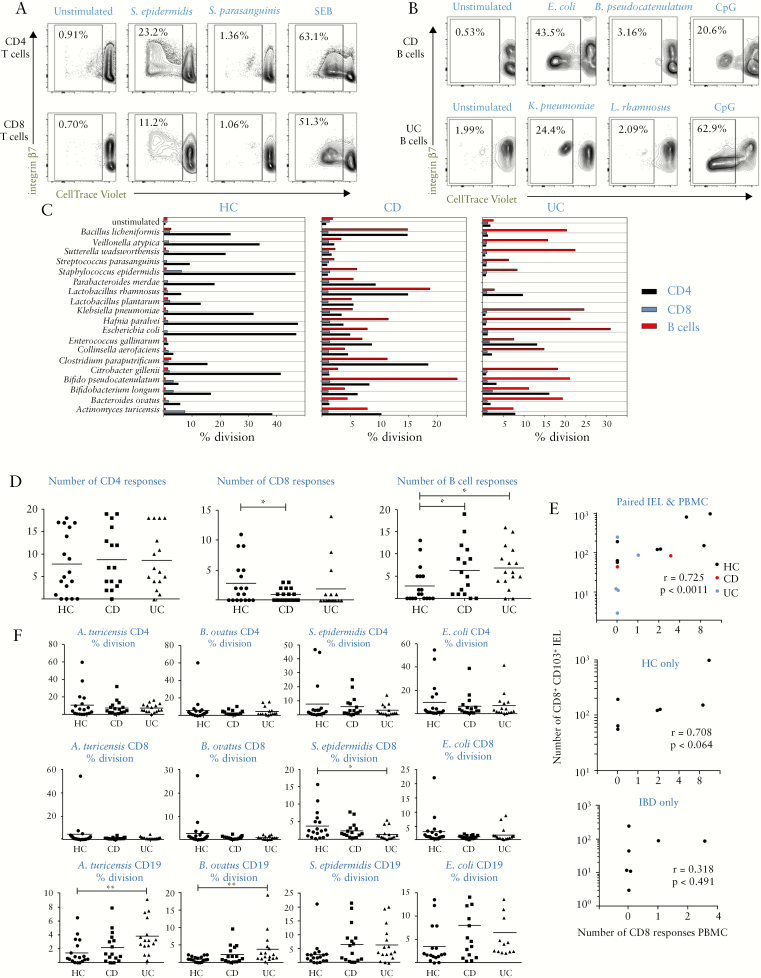Figure 5.
T- and B-cell memory responses to commensal bacteria show skewing from cell-mediated to humoral immunity in IBD. A: CD4 and CD8 T cell memory responses to selected commensals in healthy PBMC, showing examples of CellTrace Violet dilution in CD4/CD8-gated populations in cultures showing positive and negative responses alongside SEB positive control; integrin-β7 staining indicates gut-homing potential of expanded antigen-specific cells. B: CD19+ B cell responses to selected commensals in example CD and UC patient PBMC; as in A but gated on CD19+ events. C: Representative proliferation data in PBMC from an HC, CD, and UC donor, showing responses to a panel of 19 bacteria after 7 days stimulation and gating for CD4+ CD8+ and CD19+ cells. D: Pooled data as in C, showing numbers of positive responses within panel of 19 commensals. Kruskal-Wallis tests were used to compare groups; n = 18 HC, n = 16 CD and UC. E: Correlation of CD8 proliferative responses in PBMC with CD8 Trm in IEL from autologous biopsies [n = 15]. Upper panel shows pooled data with lower panels showing individual correlations for HC and IBD samples. F: Magnitude of proliferative responses to 4 individual species, one from each phylum. Pearson correlation coefficient was calculated in E. IBD,inflammatory bowel disease; PBMC, peripheral blood mononuclear cells; HC, healthy controls; CD, Crohn’s disease; UC, ulcerative colitis; IEL, intraepithelial lymphocytes.

